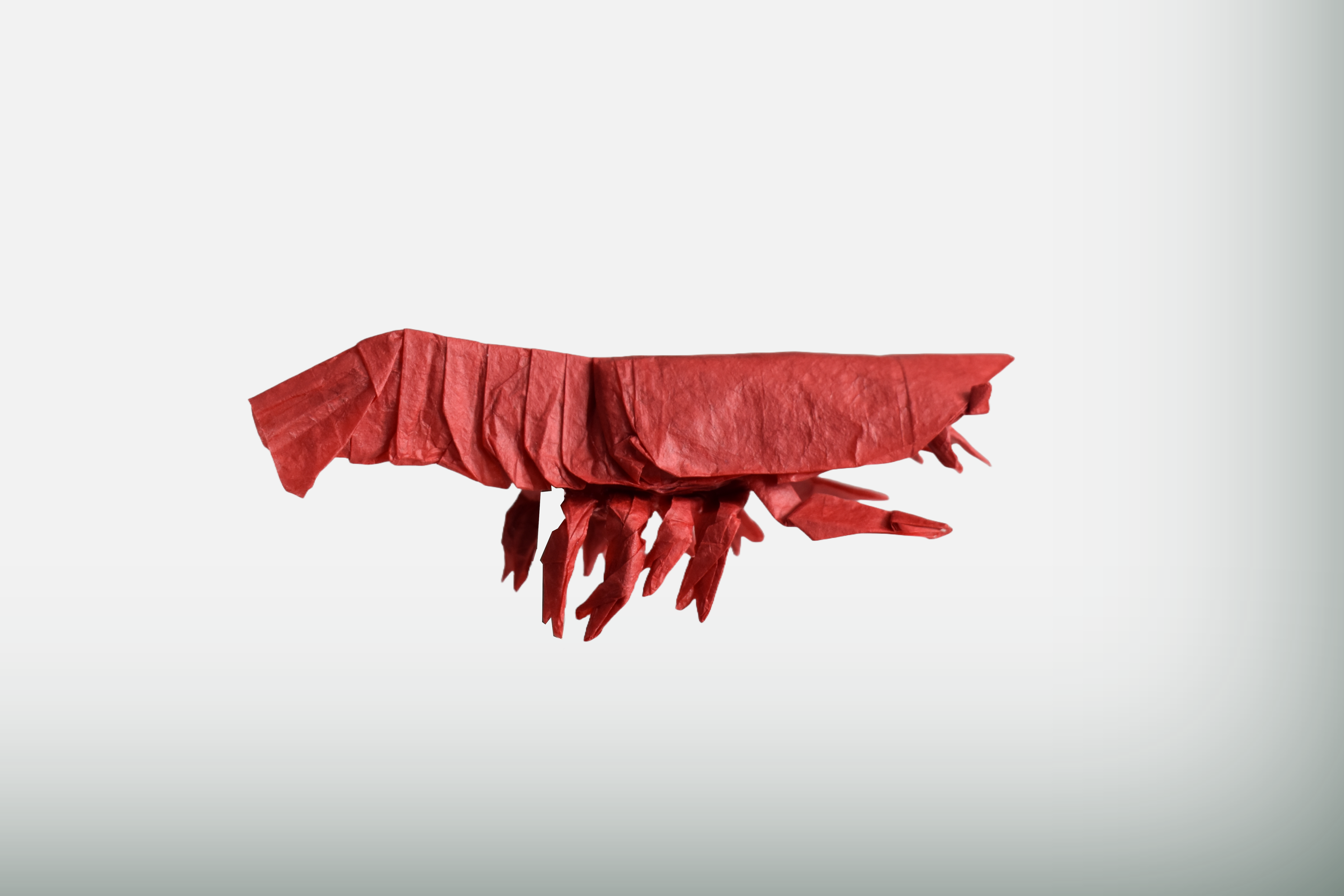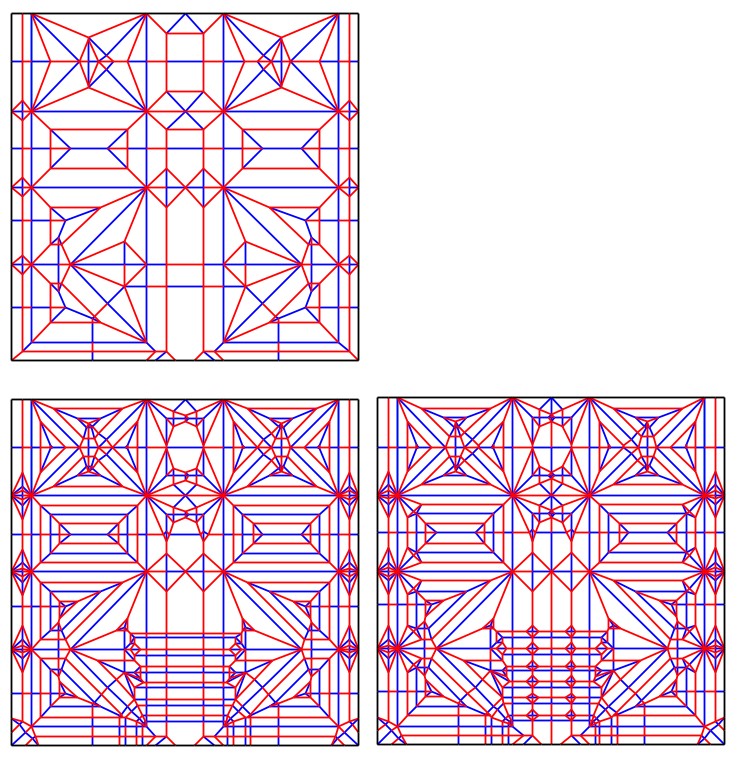Crayfish
A friend gifted me some beautiful hand-dyed paper, orange in hue. I thought it would be an engaging challenge to design a model for the sheets. The process was fairly typical for me. I first sketched out some basic packing ideas and added some 22.5 molecules and structures. I then decided to fit the model on a grid to make my life easier.
The structure is pretty basic. Five legs each are arrayed on the left-hand and right-hand edges of the sheet. A four unit wide strip graft through the middle of the model allows for pleats to indicate the plates of crayfish and for head details.
As I wanted the pincers at the tips of crayfish claws, I added an edge graft that added a unit of grid size on each side. This brought the grid size up to 18 by 18.
After another test-fold, I determined that I could shift the tip of the head back a unit and add eyes. I added a 22.5 degree tile in place of the existing box-pleat elements which meant that I could place the flaps in that area more closely together. In this manner the front pincers become slightly longer.
The design quickly spiraled out of control and became something too complicated to fold from the sheets I had been gifted.
The remarkable part of this design is that all of the elements exist as isolated tiles. This means that one can thin any flap containing portion of the model with sinks without interference from the rest. For this reason, I consider the crayfish to be based upon an 18 by 18 grid and not a 36 by 36 grid.
I’m not wholly satisfied with the design, the head is too long for a crayfish, and the design process was somewhat laborious, but I had fun, so it’s not all bad.

